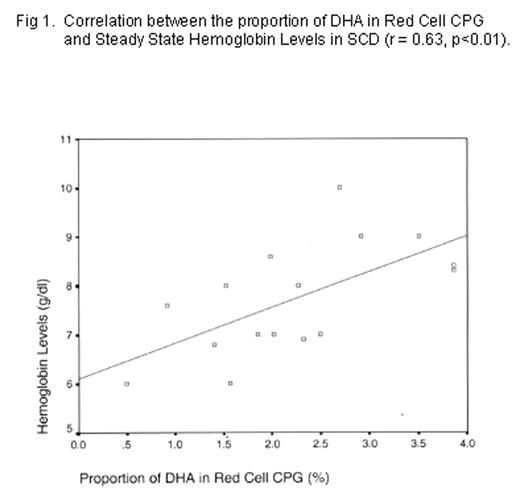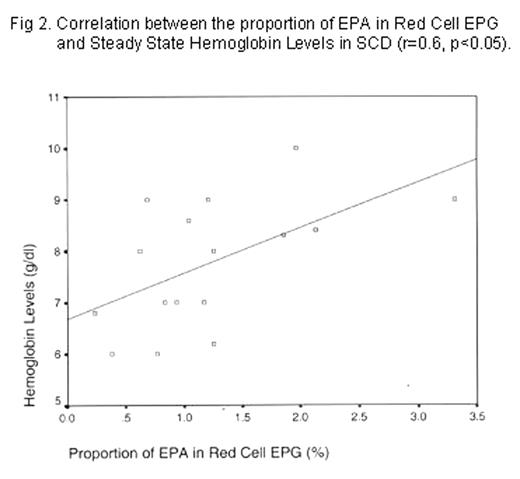Abstract
Previous studies indicate that perturbation of erythrocyte and/or plasma lipids occurs in homozygous sickle cell disease (SCD), and treatment with n-3 fatty acids (FA) is beneficial to affected individuals (
Tomer et al, Thromb Haemost2001; 966–974
). Phosphatidylserine has a role in sickle erythrocyte-endothelial adhesion, which contributes to vessel occlusion in SCD (Setty et al, Blood2002; 1564–1571
). Considering that n-3 and n-6 FA are essential structural and functional components of the red cell membrane, the objective of this study was to find out if abnormalities of these FA affect the degree of anaemia in SCD. We recruited 43 HbSS patients and 43 racially-matched, healthy, HbAA controls living in the same environment; analysed the fatty acid composition of erythrocyte membrane choline (CPG), serine (SPG) and ethanolamine (EPG) phosphoglycerides and sphingomyelin (SPM); and sought for relationship between steady-state Hb level in SCD and the proportion of n-3 FA in the red cell membrane. HbSS individuals had high levels of adrenic and docosapentanoic acids in CPG, EPG, SPG (p<0.001), and SPM (p<0.05). Arachidonic acid (AA) was increased in CPG (p<0.001) and EPG (p<0.005) of the patients. In contrast, linoleic acid (LA) was low in patients’ CPG, EPG, SPG and SPM (p<0.001). Both LA and AA were reduced in plasma CPG, triglycerides and cholesterol esters of SCD patients. There was significant positive correlation between steady-state Hb level and n-3 FA content of erythrocytes: docosahexaenoic (DHA, p<0.01, r = 0.63) and eicosapentanoic (EPA) acids in red cell CPG, and EPA in EPG (p<0.05, r = 0.60); figs. 1&2. The observed high AA with low DHA/EPA levels favour red cell adherence to vascular endothelium and vaso-occlusion. The data suggest that in SCD: synthesis of AA and/or membrane uptake of LA and AA may be abnormal; increased proportions of erythrocyte membrane DHA and EPA confer some resistance to haemolysis.Author notes
Corresponding author
2005, The American Society of Hematology
2004



